Verso il Paese dei Fumi e delle Urla
January 25 - 27, 2008 | video-sound installation, urban intervents |
Conceived for the Shoah Remembrance Day, Venezia
Organized by Venice Municipality
Andrea Morucchio's public art project Verso il Paese dei Fumi e delle Urla / Toward the Land of Smoke and Screams is made up of three elements: a public video-sound installation in Campo San Bartolomeo, Venice, the posting of 200 posters throughout the municipal area and the distribution of 5000 postcards with a text by Gadi Luzzato Voghera.
The video is composed of a double slide show made by the alternation of a dozen or so photographic images of symbols sewn onto the clothing of nazi concentration camps interns.
The sound, emitted by downward-facing speakers, consists of musical scores from Die Ermittlung / Preliminary Investigation, composed by Luigi Nono as the stage music for Peter Weiss’ theatre piece of the same name. Posters consist in a patchwork of combined images of the symbols used in the projections, the same symbols are combined in pairs on the front of postcards upon which a text by Gadi Luzzato appears on the back.
Pieces of cloth, sewn or embroidered, form six-pointed stars for Jews or simple isosceles triangles, whose different colours indicated homosexuals, communists, the gypsies or prostitutes. Through Internet research, the artist found dozens of high-resolution colour photographs of scraps of cloth and armbands bearing these symbols.
In the documentary photographs and black and white film of the Shoah and the persecution of certain minorities, the Star of David and the triangle are barely recognizable on the clothing of the ghettos and on the loose shirts of the concentration camp inmates.
Seeing them in their original colours, in high-resolution photographs, revealing the details of the weave of the threadbare but resistant cloth, the intense colours, embroidered or sewn carefully by hand, they at first appear somehow fascinating.
This sensation is immediately followed by a deep sense of bewilderment when, observing these artifacts carefully in detail, we realize, almost physically like a blow to the stomach, the appalling atrocity which produced them, thus originates from the feeling provoked by the close-up, defined, “tactile” vision of these “relics”, now sold on eBay, with the aim of instigating reflection on the fascination and attraction that racist, discriminatory and xenophobic ideas have always exercised on an ever-growing number of people.
The symbols, used as readymades in a minimal yet powerful allegory of the effects of absolute evil, rife in Europe just a few decades ago, are simply reproposed-reassembled. It is a contemporary artwork, and specifically a public art project, conceived of as a communicative “street-style” marketing operation. It’s a project aimed at visually attracting the target, only to surprise him or her, when after just a few moments, he or she realizes the implication of the symbols.
If the operation is effective, it generates reflection, if even just for a moment, on these stars and triangles which, as Luzzato wrote, [...] are not black and white, thus not a part of past history, but are a coloured patchwork of contemporary memory.
Il progetto di arte pubblica Verso il Paese dei Fumi e delle Urla è composto da tre elementi: un’installazione video-audio in campo San Bartolomeo a Venezia, l’affissione di 200 poster sul territorio comunale e la distribuzione di 5000 cartoline con un testo di Gadi Luzzato Voghera.
Il video è composto da una doppia proiezione di immagini dei simboli cuciti sulle vesti degli internati nei campi di concentramento nazisti, mentre l’audio è costituito dai brani musicali di Die Ermittlung / L’Istruttoria, composti da Luigi Nono come musiche di scena per l’omonimo lavoro teatrale di Peter Weiss. L’immagine dei poster è realizzata da un patchwork di decine di questi simboli, mentre gli stessi combinati due a due, compongono il fronte delle cartoline sul cui retro appare il testo di G. Luzzato.
Pezzi di stoffa cuciti o ricamati a formare sia la stella a sei punte per gli ebrei che un semplice triangolo isoscele, i cui diversi colori marchiavano l’omosessuale, il comunista, lo zingaro, la prostituta. Attraverso una ricerca in internet A.M. ha recuperato decine di fotografie a colori di ritagli di tessuto con questi simboli.
Nelle documentazioni fotografiche e video in bianco e nero della Shoah e della persecuzione di alcune minoranze, la stella a sei punte e i triangoli appaiono appena riconoscibili sul vestiario nei ghetti e sulle casacche degli internati nei lager. Nei loro colori originali, in foto che ne svelano i dettagli della trama del tessuto liso ma resistente, dai colori intensi, ricamati o cuciti a mano con cura, appaiono di primo acchito in qualche modo affascinanti.
Una sensazione seguita immediatamente da un senso di profondo smarrimento quando, osservando questi manufatti attentamente nei particolari, si avverte quasi fisicamente con un colpo allo stomaco l’immane atrocità che gli ha prodotti. Questo progetto nasce, quindi, dalle sensazioni che la visione ravvicinata, definita, “tattile” di queste “reliquie”, vendute ora su eBay, provocano nell’osservatore.
L’obiettivo è di far riflettere sulla fascinazione e attrazione che nella nostra società sempre in un maggior numero di persone esercitano idee razziste, discriminatorie xenofobe verso il diverso, le minoranze. I simboli usati come ready made, allegoria minimale e potente degli effetti del male assoluto imperversato in Europa pochi decenni fa, vengono semplicemente riproposti-riassemblati così come sono in tre situazioni.
Si tratta di un progetto artistico e specificatamente di public art, ideato come operazione comunicativa di marketing “da strada” che attraverso la distribuzione pubblica delle cartoline, l’affissioni di centinaia di manifesti e le proiezioni video in uno dei luoghi più frequentati di Venezia è volta ad attrarre visivamente il potenziale target consumatore a colpirlo quando, dopo qualche istante, realizza di che simboli si tratta e, se l’operazione è efficace, a farlo riflettere, anche un attimo su questi simboli, stelle e triangoli, che come scrive Gadi Luzzato... non sono in bianco e nero, non sono storia passata. Sono un patchwork colorato di memoria attuale.
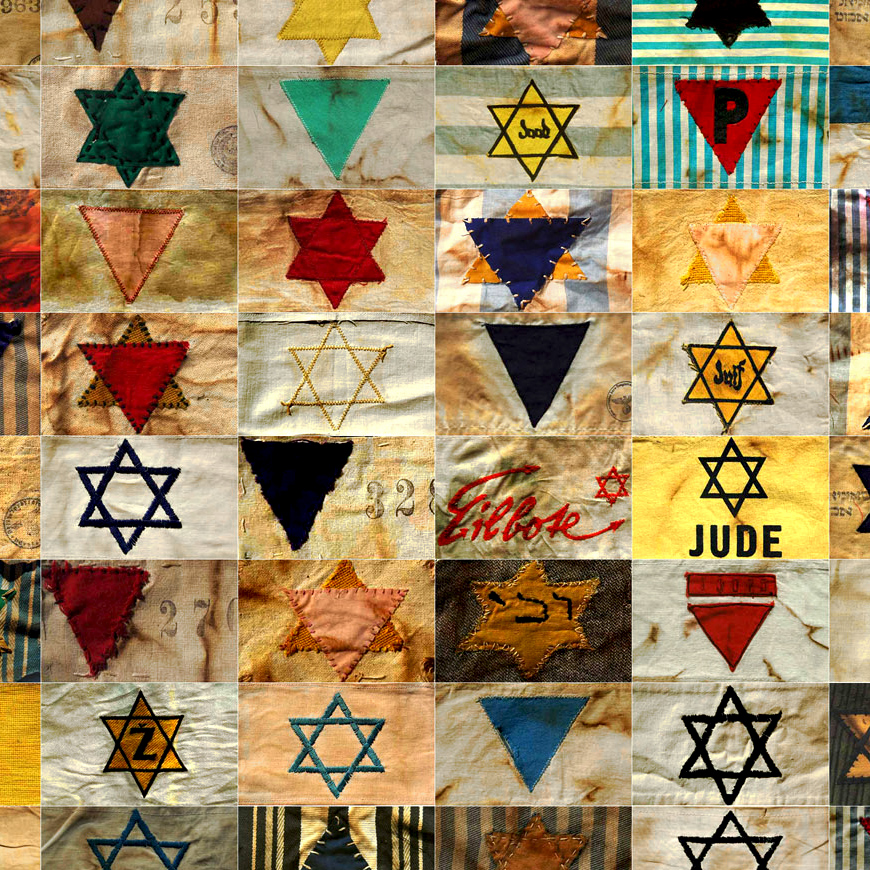
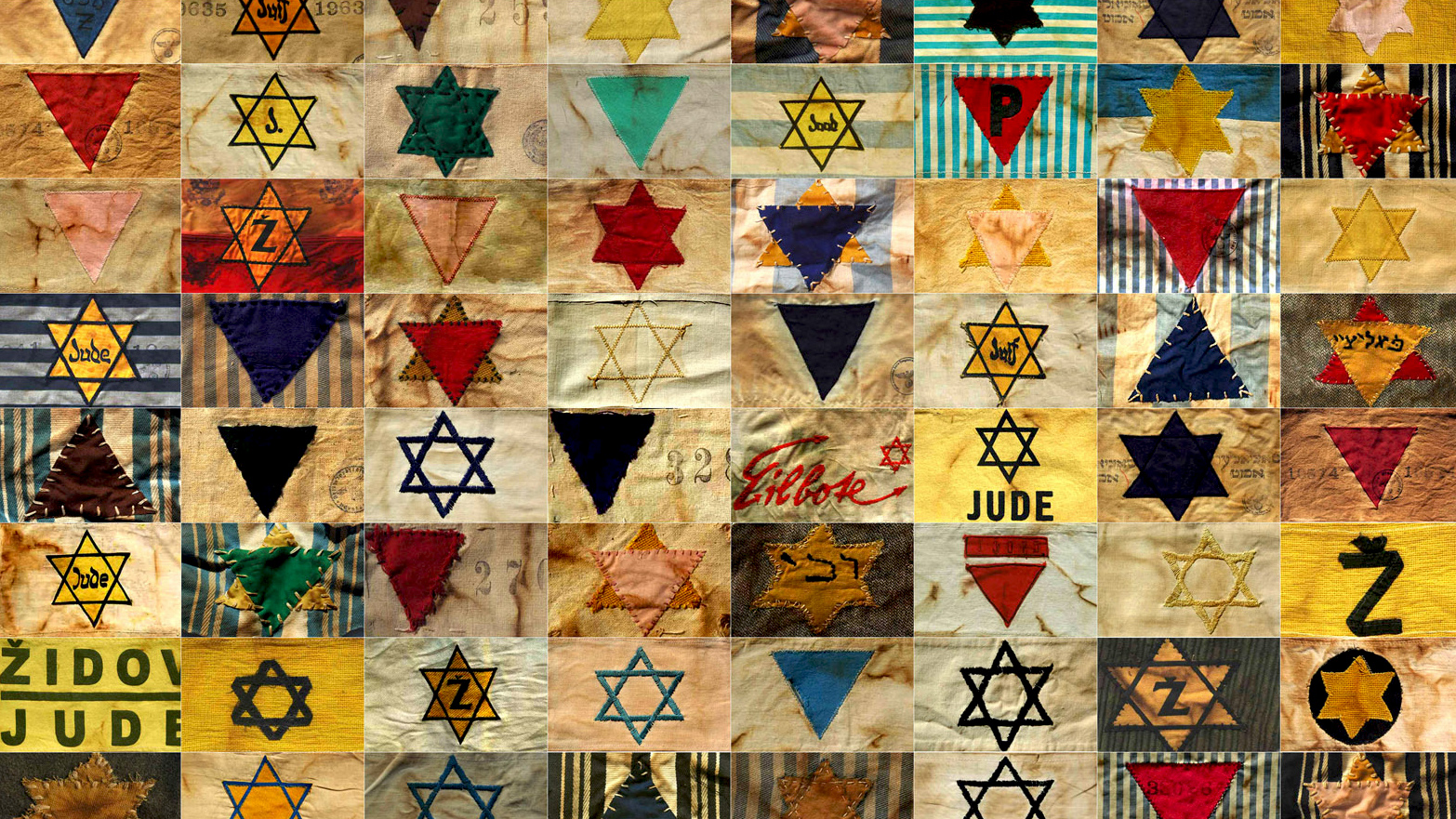
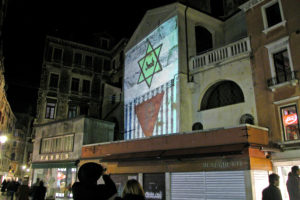
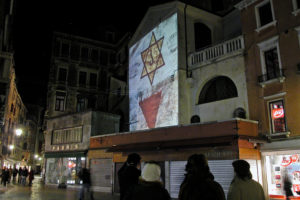
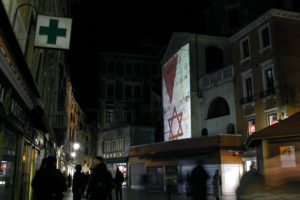
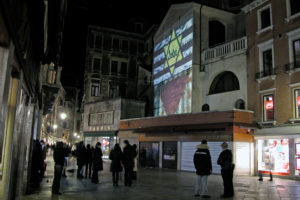
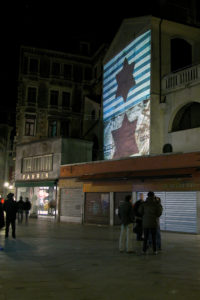
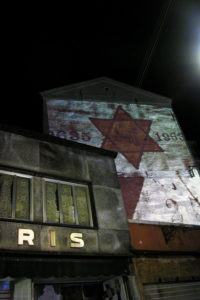
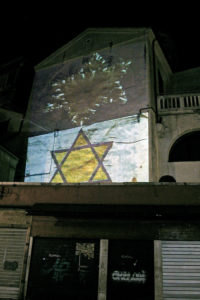
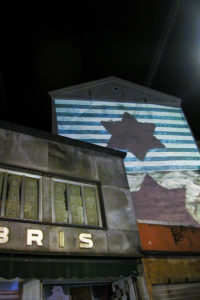
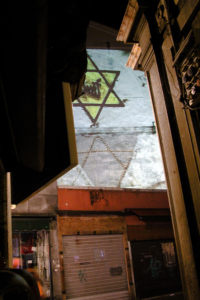
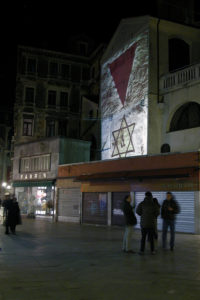
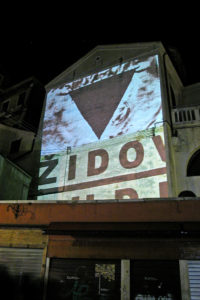

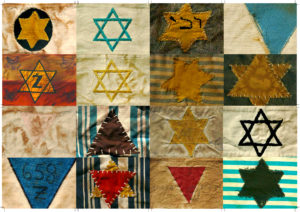
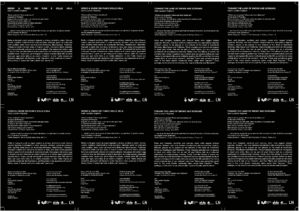
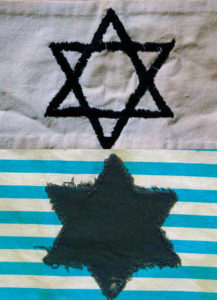
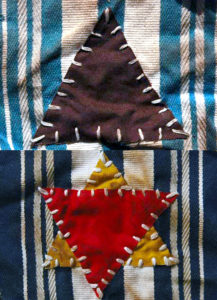
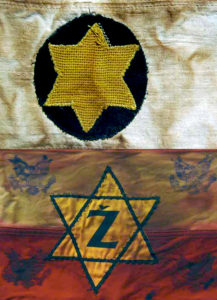
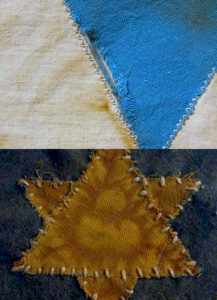
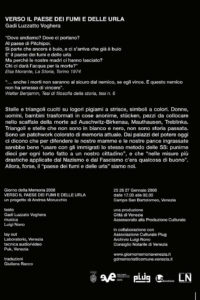
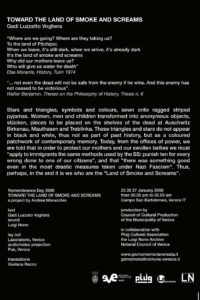
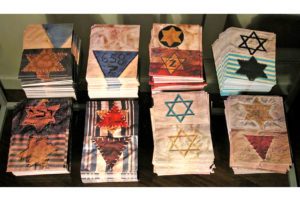
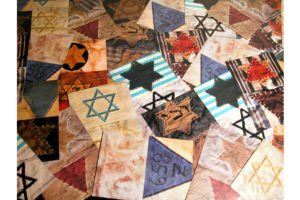
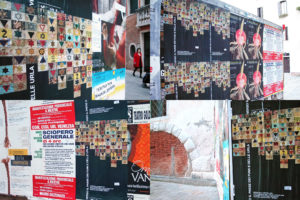

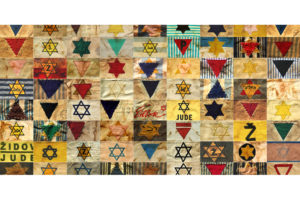
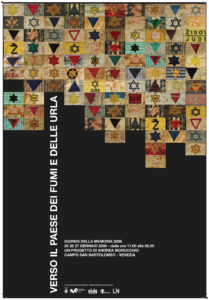
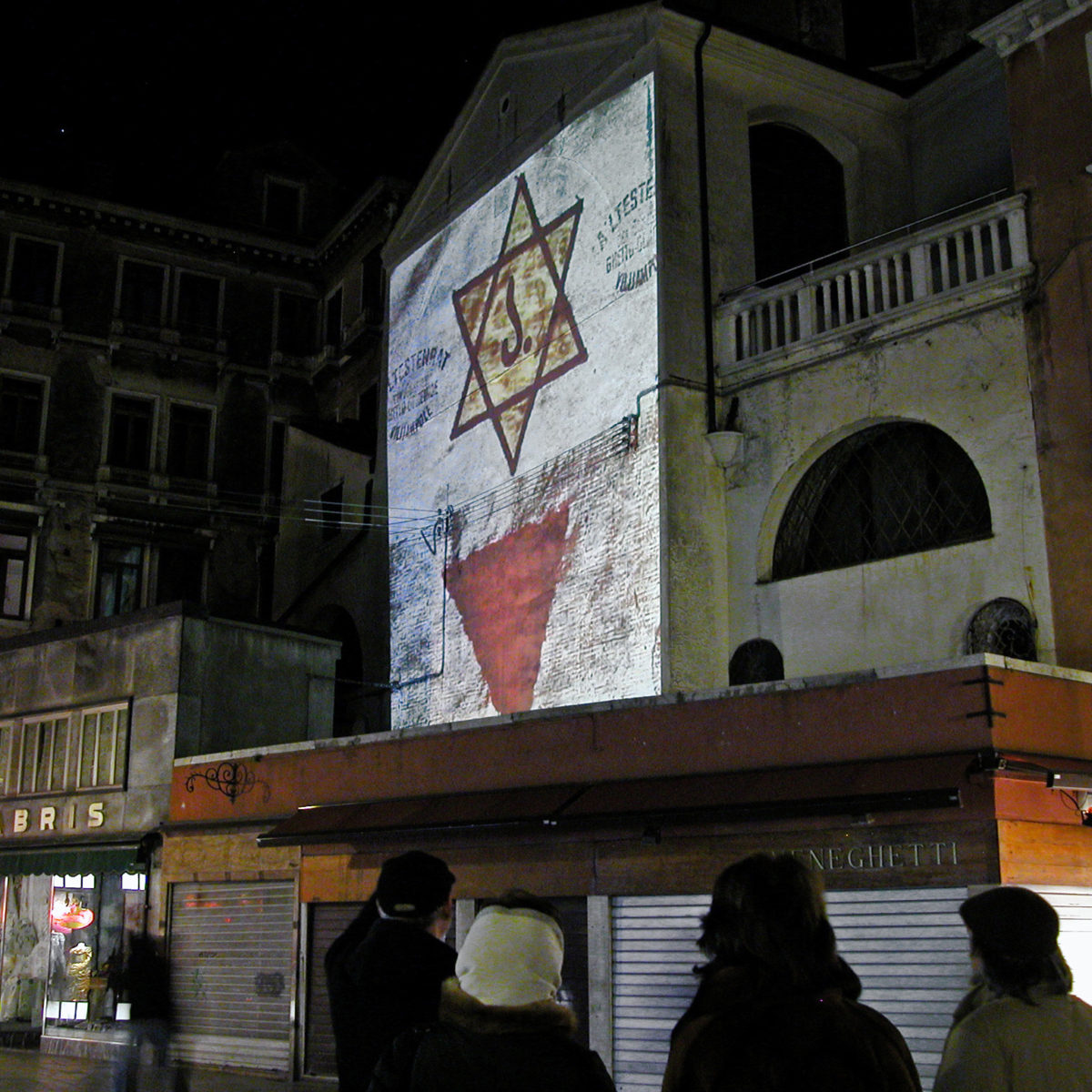 “Towards the Land of Smoke and Shouting”, text by Gadi Luzzato Voghera, 2008, eng
“Towards the Land of Smoke and Shouting”, text by Gadi Luzzato Voghera, 2008, eng